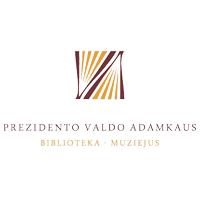This year an open-air exhibition of archive photographs commemorates the centennial anniversary of the Lithuanian Constituent Assembly. It tells us more about the elections, the first gathering of the Assembly and its main reforms during a two-year term.
Constituent Assembly was the first in Lithuanian history democratically elected parliament – constitutor of the nation’s will, which, on the grounds of the Independence Act of February 16, 1918, was empowered by the Council of Lithuania to shape the future of the state. The election date for the Constituent Assembly was set by the President’s decree of January 12, 1920 for April 14–15 (extended to April 16). Lithuanian citizens aged 21 or older (soldiers from 17) were eligible to vote, and those aged 24 or older were eligible to participate as candidates. 112 representatives were elected.
For the first time in the history of Lithuania, women could participate in an electoral process on an equal footing with men: women could not only vote, but they could also be elected to the Constituent Assembly. Still, women were heavily underrepresented – there were only five women elected to the Constituent Assembly, and eight women worked at the Constituent Assembly during the full term.
On May 15, members of the newly elected Constituent Assembly gathered in the provisional capital Kaunas for the first sitting of the Parliament. Day-long celebrations started with the Holy Mass, continued with a Military parade, tree planting and a solemn opening sitting in the City Theatre; finally, the event ended with a festive dinner in “Metropolis” restaurant.
On May 15, during the first sitting, the Constituent Assembly unanimously adopted a document proclaiming the independence of Lithuania and established a democratic republic as its form of governance. On May 18, the Statute of the Constituent Assembly was adopted, the Presidium was formed, and the Parliament started its routine work.
The Constituent Assembly undertook legislative action regulating various areas of life and initiated reforms necessary for the modernization of the country and for an increase of the social welfare of its citizens. In two years and a half, the Constituent Assembly had a total of 257 plenary sittings (in addition to 43 sittings of the Minor Assembly which convened during the Lithuanian Wars of Independence) and adopted 268 legal acts (laws and amendments). This legislation fundamentally affected the further development of the state of Lithuania.
The Constituent Assembly was in charge of running the Presidential election. During the years of parliamentarian democracy, the President of Lithuania was elected by the members of the Parliament for a tree-year term. Aleksandras Stulginskis, Speaker of the Constituent Assembly, served as an Acting President of the Republic.
Foreign affairs were among the major undertakings of the Constituent and further Assemblies: their activity involved seeking for international recognition of Lithuania, ratifying territorial agreements and peace treaties of the Government, international trade pacts and other treaties of state-level importance.
The Constituent Assembly and further Assemblies undertook legislation, overlooked its implementation and oversaw the Cabinet’s work. Two Cabinets, the Sixth and the Seventh Cabinets, worked during the term of the Constituent Assembly.
Publicity and accountability to the electorate was one of the key operating principles of the Constituent Assembly. The sittings were widely discussed in the press, and their transcripts were publicized in an official journal “Work of the Constituent Assembly”, published by the Chancery of the Parliament. Members of the Constituent Assembly were eager to meet their electorate directly.
When facing the escalating territorial conflicts, especially after the breach of Suvalkai Treaty in October 1920, the Constituent Assembly halted its activity and took on the fight for the independence of Lithuania in a variety of ways. The Minor Assembly, constituted of 7 members, was authorized to perform the main functions of the Constituent Assembly, which resumed its plenary sittings only on January 17, 1921.
The fundamental law of the state – the Constitution – was adopted by the Constituent Assembly on August 1, 1922. The Constitution stipulated that Lithuania was an independent democratic republic and finalized the legal procedures of the state restoration. Human rights, civil rights and freedoms were guaranteed by the Constitution. All Lithuanian citizens, regardless of their religion, social status or nationality, were declared equal, while national minorities were given cultural autonomy within the legal framework of the Republic of Lithuania.
The Land Reform based on a law passed by the Constituent Assembly on February 15, 1922, made a huge impact on the agrarian and rustic Lithuania. More than thirty-four thousand landless people and twenty-six thousand small-scaled landowners received land lots. This Land Reform sped up adaptation to the European market, facilitated the development of the Lithuanian economy, strengthened the society’s trust in the state and created a network of citizens loyal to their state.
On August 9, 1922, the Constituent Assembly passed a law on the monetary unit of the Republic of Lithuania which influenced Lithuania’s economy no less than the Land Reform. By ensuring the stability of the currency, the new monetary unit, Litas, broke the fiscal ties with Germany, and allowed to stabilize the economic situation of the country. The first banknotes of Litas and Centas were issued on November 16, 1922, while Litas and Centas coins entered circulation in 1925.
The education system was also at the center of attention of the Constituent Assembly. Following the Statute of the University of Lithuania, other legal documents establishing Music, Art and Military schools as well as Higher Officers’ Courses were passed in 1922. The Law on Elementary Schools ensured that primary education was compulsory for children aged between 7 and 14.
Constituent Assembly issued many laws promoting the cultural and intellectual life of the country. Many institutions of education and art were established, such as museums, archives and libraries.
Curator of the exhibition – historian Marija Navickaitė. Designer – Milda Kairaitienė.
The exhibition features photographs from the Lithuanian Central State Archive, M. K. Čiurlionis National Museum of Art, Historical Presidential Palace of the Republic of Lithuania, Wroblewski Library of the Lithuanian Academy of Sciences, Vilna Gaon Museum of Jewish History, Rokiškis Regional museum, Money Museum of the Bank of Lithuania, Šiauliai “Aušros” Museum. Informational partner – daily “Kauno diena”.
We kindly invite you to an exhibition. The garden is open daily from 7:00 am to 10:00 pm.



















